The Department of Defense’s Cybersecurity Maturity Model Certification (CMMC) 2.0 represents more than a regulatory checkpoint; it’s a strategic inflection point that’s reshaping how defense contractors approach cybersecurity. While CMMC Level 1 may be positioned as the foundational tier, forward-thinking organizations are discovering that meeting these requirements can catalyze broader security transformation and competitive advantage in the defense sector.
For compliance professionals managing complex audit portfolios, CMMC Level 1 presents both an immediate challenge and a strategic opportunity. The question isn’t just whether your organization can meet the baseline requirements for handling Federal Contract Information (FCI), but how effectively you can leverage this compliance effort to build a scalable, multi-framework security program that positions your business for sustained growth in the defense ecosystem.
Key takeaways
- CMMC Level 1 compliance creates the foundation for a mature cybersecurity program that extends far beyond meeting minimum DoD requirements. Organizations that approach Level 1 strategically position themselves to handle more sensitive data classifications and pursue higher-value defense contracts.
- The controls and processes established for CMMC Level 1 create natural pathways to more advanced certifications, including CMMC Level 2, SOC 2, and ISO 27001. This integrated approach transforms compliance from a series of isolated audits into a cohesive security strategy.
- Purpose-built automation and expert guidance eliminate the traditional pain points of manual documentation, unpredictable costs, and endless audit cycles. By mapping controls across multiple frameworks simultaneously, organizations can achieve several certifications through a single, coordinated effort.
What is CMMC Level 1 compliance?
CMMC Level 1 establishes baseline cybersecurity practices for defense contractors handling Federal Contract Information—non-classified but sensitive government data that requires protection from unauthorized disclosure. This includes technical specifications, project schedules, supplier information, and other materials that, while not classified, could provide competitive advantage if compromised.
The certification applies to any organization in the Defense Industrial Base (DIB) that processes, stores, or transmits FCI as part of their DoD contracts. This encompasses prime contractors, subcontractors, and suppliers across the defense supply chain, from major aerospace manufacturers to specialized component suppliers and professional services firms.
However, viewing CMMC Level 1 purely through a compliance lens misses its strategic significance. Organizations that treat Level 1 as a stepping stone rather than a destination position themselves for multiple advantages:
- The foundational security practices established for Level 1 create the infrastructure necessary for handling Controlled Unclassified Information (CUI) and pursuing CMMC Level 2 certification.
- Many Level 1 controls overlap with other frameworks, enabling efficient multi-framework compliance strategies that reduce audit fatigue and accelerate time-to-certification for additional standards.
The business case for proactive compliance extends beyond risk mitigation. Defense contractors with established compliance programs demonstrate operational maturity that influences contract awards, partnership opportunities, and investor confidence. In an increasingly competitive defense market, cybersecurity maturity becomes a differentiating factor that enables organizations to pursue higher-value, more strategic contracts.
Integration with broader compliance frameworks amplifies this strategic value. The access controls, documentation practices, and monitoring capabilities required for CMMC Level 1 align closely with:
Organizations that map these overlapping controls can satisfy multi-framework compliance obligations simultaneously, transforming what traditionally represents separate, resource-intensive audit cycles into a coordinated compliance strategy.
What are CMMC Level 1 requirements?
CMMC Level 1 encompasses 15 security practices organized across six domains, each addressing critical aspects of information security for organizations handling FCI.
- Access Control establishes who can access FCI and under what circumstances. This domain requires organizations to identify information system users, limit information system access based on job functions, and ensure that only authorized users can access sensitive data through proper account management. Organizations must implement strong authentication mechanisms and ensure that access permissions align with employees’ actual responsibilities rather than convenience-based assignments.
- Identification and Authentication verify user identities before granting access to systems containing FCI. This includes implementing robust password policies, multi-factor authentication where appropriate, and managing user credentials throughout their lifecycle. The focus extends beyond initial authentication to include ongoing identity verification and session management.
- Media Protection addresses both physical and digital media used to store FCI. Organizations must establish procedures for media handling, storage, transportation, and disposal. This includes requirements to destroy information system media securely, proper labeling of removable media, and controls over who can access physical storage locations.
- Physical Protection limits physical access to locations where FCI is stored or processed. This encompasses facility security measures, visitor management, equipment protection for publicly accessible system components, and environmental controls across respective operating environments. The requirement extends to remote work environments where employees may access FCI from home offices or other non-traditional locations.
- System and Communications Protection ensures secure communication channels and system boundaries. Organizations must implement network segmentation to establish key internal boundaries, secure communication protocols to protect organizational communications, and boundary protection measures for external information systems. This domain addresses both internal system access security and external communication channels used to transmit FCI.
- System and Information Integrity maintains system security through ongoing monitoring, vulnerability management, and incident response capabilities. This includes implementing malicious code protection mechanisms, managing information system flaws through security patch management, and procedures for detecting and responding to security incidents across organizational information systems.
The self-assessment process for CMMC Level 1 requires annual evaluation and executive affirmation of compliance. Unlike higher CMMC levels that mandate third-party assessments, Level 1 places responsibility on organizations to accurately evaluate their own compliance posture. This self-assessment model demands thorough documentation, consistent monitoring, and executive accountability for compliance claims.
Documentation and evidence collection best practices center on creating defensible, audit-ready records that demonstrate consistent implementation of required controls. This includes maintaining policy documents, implementation procedures, training records, incident logs, and regular assessment reports. The documentation must demonstrate not just that controls exist on paper, but that they’re actively implemented and monitored.
Common implementation gaps often emerge around continuous monitoring, documentation consistency, and control integration. Many organizations successfully implement individual controls but fail to establish the ongoing monitoring and documentation practices necessary to demonstrate sustained compliance. Others create policies and procedures but struggle with consistent implementation across distributed teams or complex technology environments.
“One of the biggest pitfalls I see companies make when looking at CMMC compliance is misunderstanding what it takes to actually be CMMC compliant. It goes beyond just having policies and procedures. It’s actual implementation and ensuring the right evidence is documented to show the control is effective.” – Jay Trinckes, Data Protection Officer, Thoropass
How do you implement CMMC Level 1 compliance?
Successful CMMC Level 1 implementation follows a structured approach that transforms complex requirements into manageable, sequential steps that build upon each other.
- Assessment begins with understanding your current security posture relative to CMMC Level 1 requirements. This involves inventorying existing security controls, policies, and procedures across all six domains. The assessment should identify which controls are already in place, which require enhancement, and which need to be implemented from scratch.
- Gap analysis compares your current state against each of the 15 CMMC Level 1 practices, prioritizing gaps based on implementation complexity and business impact. This analysis should consider not just technical controls but also policy documentation, training requirements, and ongoing monitoring capabilities.
- Timeline planning establishes realistic milestones for addressing identified gaps while maintaining business operations. The timeline should account for policy development, technology implementation, staff training, and the establishment of ongoing monitoring processes. Planning should also consider how Level 1 implementation sets the foundation for potential future compliance requirements.
When do CMMC Level 1 requirements take effect?
The CMMC implementation follows a phased rollout schedule through 2028, with increasing requirements based on contract types and sensitivity levels. Phase 1 begins with self-assessments for Level 1 contractors, providing organizations time to establish foundational practices before more stringent assessment requirements take effect.
Strategic preparation recommendations focus on building compliance momentum that extends beyond immediate CMMC Level 1 requirements. Organizations should establish governance structures, documentation practices, and monitoring capabilities that can scale to support higher certification levels and additional frameworks. This approach transforms compliance from a reactive burden into a proactive competitive advantage.
Building compliance momentum for future levels requires intentional alignment between Level 1 implementation and broader security strategy. The policies, procedures, and technologies implemented for Level 1 should be designed with scalability in mind, enabling efficient progression to CMMC Level 2 when business requirements demand handling of CUI or pursuing contracts with enhanced security requirements.
Organizations should also consider how CMMC Level 1 compliance integrates with other regulatory requirements they face. Many defense contractors also serve commercial markets with SOC 2, ISO 27001, or industry-specific compliance requirements. A strategic approach to CMMC Level 1 can create synergies that reduce the overall compliance burden while strengthening the organization’s security posture across all market segments.
How does Thoropass streamline CMMC Level 1 compliance?
The platform capabilities built into Thoropass streamline the traditionally manual and fragmented process of CMMC assessment and maintenance. Thoropass provides automated evidence collection, policy template libraries, and integrated monitoring tools specifically designed for CMMC requirements. This eliminates the common pain points of scattered documentation, manual tracking, and assessment preparation uncertainty.
Expert guidance from experienced compliance professionals ensures that organizations avoid common implementation pitfalls while building sustainable compliance programs. Thoropass compliance specialists bring a deep understanding of both CMMC requirements and practical implementation challenges, providing guidance that goes beyond checklist completion to create robust, defensible security programs.
Automated evidence collection and continuous monitoring transform compliance from an annual scramble into an ongoing state of readiness. Instead of gathering evidence during assessment preparation, organizations maintain real-time visibility into their compliance posture through integrated monitoring and automated documentation collection.
The multi-framework approach enables organizations to leverage CMMC Level 1 implementation across multiple compliance requirements simultaneously. By mapping controls across CMMC, SOC 2, ISO 27001, and other frameworks, organizations can achieve multiple certifications through coordinated audit processes rather than separate, resource-intensive cycles.
Reduced time-to-compliance and predictable costs address two of the most significant pain points for compliance professionals managing complex audit portfolios. Traditional compliance approaches often involve unpredictable timelines, escalating costs, and endless revision cycles. Thoropass’s platform-driven approach provides visibility and control over both timeline and budget from project initiation through ongoing maintenance.
The recent launch of CMMC Level 2 capabilities within the Thoropass platform creates natural progression paths for organizations that begin with Level 1 and subsequently need to handle CUI or pursue contracts requiring advanced security practices. This integrated approach eliminates the need to rebuild compliance infrastructure when advancing to higher certification levels.
Breaking the challenge cycle with Thoropass
The audit pain points that plague enterprise compliance programs—manual processes, unpredictable costs, and endless cycles—stem from fundamental limitations in traditional audit approaches.
- Manual evidence collection creates bottlenecks and inconsistencies that extend timelines and increase costs
- Disconnected tools and processes create information silos that make it difficult to maintain visibility into compliance status or accurately predict audit outcomes
Scaling compliance across large organizations compounds these challenges, particularly when different business units or geographic locations operate with varying security maturity levels. Traditional approaches require significant coordination overhead and often result in inconsistent implementation across the organization.
Technology-enabled solutions address these challenges through automation, integration, and continuous monitoring capabilities that traditional approaches cannot match. Instead of periodic assessment preparations that disrupt business operations, modern compliance platforms maintain ongoing readiness through integrated monitoring and automated evidence collection.
Multi-framework efficiency represents a paradigm shift from treating each compliance requirement as a separate project to managing an integrated compliance portfolio. By leveraging CMMC Level 1 controls to satisfy SOC 2 trust service criteria, ISO 27001 control objectives, and other framework requirements, organizations can achieve multiple certifications through coordinated audit processes that share evidence, documentation, and assessment activities.
This integrated approach not only reduces the resource burden of maintaining multiple certifications but also creates more robust security programs by eliminating gaps and inconsistencies that often emerge when compliance requirements are managed in isolation.
Get CMMC Level 1 compliant—fast, confidently, and without the guesswork
CMMC Level 1 compliance doesn’t have to slow down your defense contracting ambitions or drain resources through manual processes and unpredictable audit cycles. Thoropass provides the expertise, automation, and integrated platform capabilities that transform compliance from a burden into a competitive advantage.
Whether you’re entering the defense supply chain for the first time or adding CMMC to an existing compliance portfolio, Thoropass makes it possible to achieve certification efficiently while building the foundation for future growth and additional frameworks. Talk to an expert today.
More FAQs
How does CMMC Level 1 compliance impact our ability to bid on DoD contracts?
CMMC Level 1 compliance is mandatory for any organization handling Federal Contract Information (FCI) in DoD contracts. Without certification, your organization will be automatically disqualified from bidding on these opportunities, regardless of technical capabilities or competitive pricing.
Beyond immediate contract eligibility, defense contractors evaluate partners based on compliance maturity. Organizations with established CMMC compliance demonstrate operational sophistication that influences partnership opportunities and positions them for higher-value contracts requiring enhanced security practices.
Early compliance provides competitive advantages during the phased rollout. As CMMC requirements take effect across different contract types, compliant organizations can pursue opportunities that non-compliant competitors must pass over.
Can we leverage existing SOC 2 or ISO 27001 controls for CMMC Level 1 compliance?
Yes, significant overlap exists between CMMC Level 1 and SOC 2 Type II or ISO 27001 requirements. Many access control, system monitoring, and documentation practices established for these frameworks directly satisfy CMMC Level 1 obligations, reducing implementation effort and costs.
Strategic control mapping identifies overlapping requirements across frameworks. SOC 2 access control measures often exceed CMMC Level 1 requirements, while ISO 27001 documentation practices provide foundations for CMMC evidence collection. Organizations with mature programs typically need to address specific CMMC requirements around Federal Contract Information handling rather than rebuilding entire security programs.
Leveraging existing controls requires careful gap analysis to ensure CMMC-specific requirements are fully addressed. A multi-framework compliance approach enables organizations to satisfy multiple standards through coordinated processes rather than separate audit cycles.
What happens if we fail our CMMC Level 1 self-assessment?
Failing a CMMC Level 1 self-assessment immediately disqualifies your organization from pursuing or maintaining DoD contracts requiring Level 1 certification. This impacts both new opportunities and existing contracts, as CMMC compliance is an ongoing obligation.
The self-assessment model places responsibility on organizations to accurately evaluate their compliance posture and provide executive affirmation. Unlike third-party assessments with external validation, Level 1 requires internal accountability for compliance claims. Inaccurate self-assessments can result in contract termination if discovered during DoD reviews.
Recovery requires addressing identified gaps through remediation, reassessment, and new executive affirmation. The timeline depends on the scope of compliance gaps. Organizations should establish robust internal assessment processes and continuous monitoring to minimize assessment failure risk.
Can we scale from CMMC Level 1 to Level 2 within the same platform?
Modern compliance platforms like Thoropass enable seamless progression from CMMC Level 1 to Level 2 without rebuilding compliance infrastructure. The policies, procedures, and monitoring capabilities established for Level 1 create foundational elements that extend to Level 2’s comprehensive requirements for handling Controlled Unclassified Information (CUI).
Level 2 builds upon Level 1 foundations while adding advanced practices. Organizations that implement Level 1 strategically position themselves for efficient Level 2 progression by establishing scalable governance structures and technology integrations that support expanded requirements.
The platform approach eliminates common scaling challenges like data migration and process redesign. Instead of starting fresh, organizations extend their existing compliance infrastructure through additional controls and enhanced monitoring.
When will CMMC Level 1 requirements go into effect for our contracts?
CMMC implementation begins 60 days after publication of the final Title 48 CFR CMMC acquisition rule, with a phased rollout over approximately three years. Different contract types and dollar thresholds become subject to requirements at different times.
Phase 1 focuses on self-assessments for Level 1 contractors, providing time to establish foundational practices before more stringent requirements take effect. Subsequent phases expand coverage to additional contract types while implementing third-party assessments for higher CMMC levels.
Contract-specific requirements depend on the information types handled and contract characteristics. Organizations should review existing DoD contracts and anticipated opportunities to understand specific timeline requirements.
How do CMMC Level 1 requirements differ from existing FAR 52.204-21 obligations?
CMMC Level 1 aligns closely with existing Federal Acquisition Regulation (FAR) 52.204-21 basic safeguarding requirements but introduces formal certification and ongoing compliance obligations that extend beyond previous expectations.
While FAR 52.204-21 established security requirements for protecting Federal Contract Information, enforcement mechanisms were limited. CMMC transforms these requirements into formal certification standards with mandatory self-assessment, executive affirmation, and ongoing compliance maintenance.
The substantive security controls remain largely consistent, but CMMC introduces enhanced documentation requirements, formal assessment processes, and accountability mechanisms. Organizations that effectively implemented FAR 52.204-21 typically need to strengthen documentation practices and establish formal assessment processes rather than implementing entirely new security controls.

Related Posts
Stay connected
Subscribe to receive new blog articles and updates from Thoropass in your inbox.
Want to join our team?
Help Thoropass ensure that compliance never gets in the way of innovation.

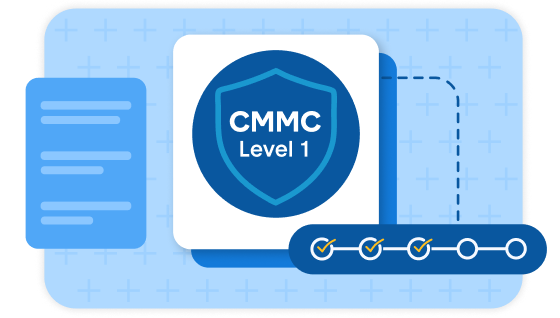
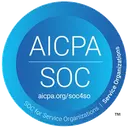


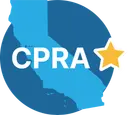




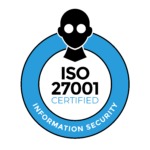

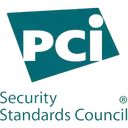
.png)